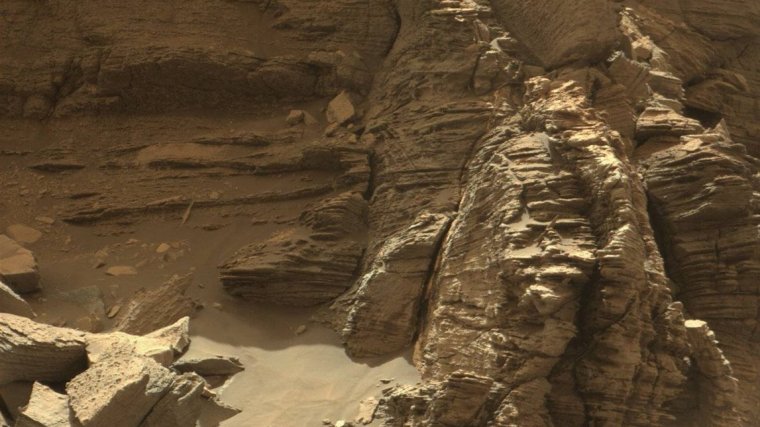| News / Space News |
Mars Rover Views Spectacular Layered Rock Formations
NASA | SEPTEMBER 13, 2016
The layered geologic past of Mars is revealed in stunning detail in new color images returned by NASA's Curiosity Mars rover, which is currently exploring the "Murray Buttes" region of lower Mount Sharp.

Curiosity got close to this outcrop on Sept. 9, 2016, which displays finely layered rocks. ![]()
The Martian buttes and mesas rising above the surface are eroded remnants of ancient sandstone that originated when winds deposited sand after lower Mount Sharp had formed.
The new images represent Curiosity's last stop in the Murray Buttes, where the rover has been driving for just over one month.
As of this week, Curiosity has exited these buttes toward the south, driving up to the base of the final butte on its way out. In this location, the rover began its latest drilling campaign (on Sept. 9). After this drilling is completed, Curiosity will continue farther south and higher up Mount Sharp, leaving behind these spectacular formations.
Curiosity landed near Mount Sharp in 2012. It reached the base of the mountain in 2014 after successfully finding evidence on the surrounding plains that ancient Martian lakes offered conditions that would have been favorable for microbes if Mars has ever hosted life. Rock layers forming the base of Mount Sharp accumulated as sediment within ancient lakes billions of years ago.
On Mount Sharp, Curiosity is investigating how and when the habitable ancient conditions known from the mission's earlier findings evolved into conditions drier and less favorable for life.
YOU MAY ALSO LIKE


